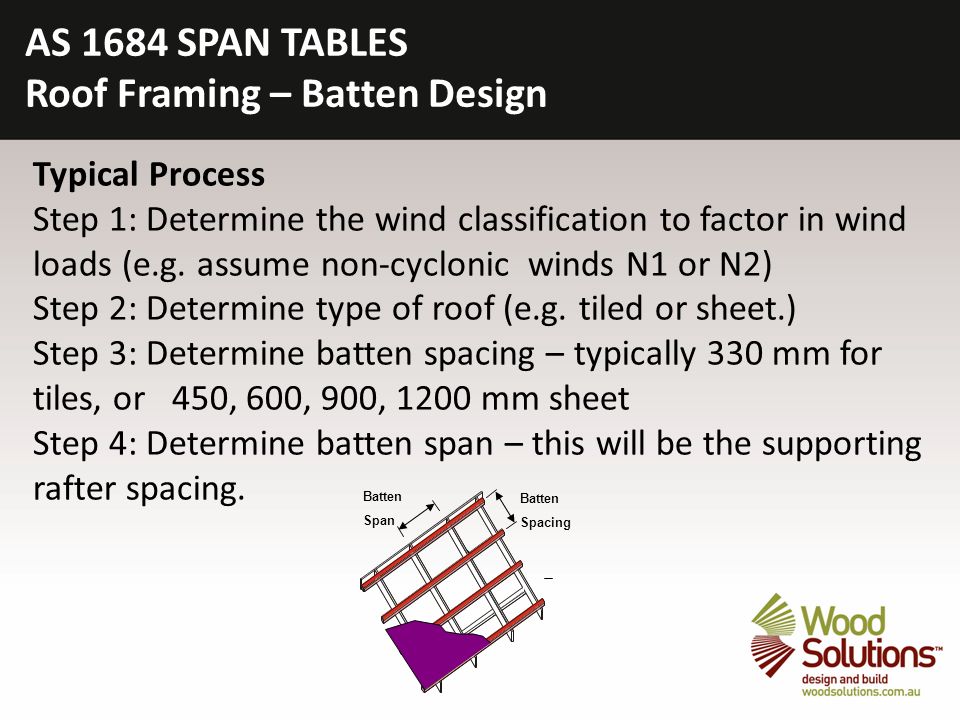Working on a roof involves working at height so always use scaffolding or other stable platform never use just ladders even on a bungalow.
Roofing laths spacing.
Most roofers prefer stripping.
Check size and spacing of battens.
The roofing is manufactured in panels that.
The spacing of the battens depend on the type of roofing material and are applied horizontally.
Batten spacing roofing battens or roofing laths placed loosely onto the roof with the tiles seated on top of each other.
What type of roof do you currently have.
Installing wood stripping under a tin roof.
According to bs 5534 the appropriate batten size will depend on the span of the rafters and the roof covering.
With the roofing felt fitted see fixing roofing felt the next job is to fix the roofing battens.
Roofing battens or laths are strips of timber which are nailed into lines along the roof trusses of a house from which the roof tiles are hung.
If you don t strip the roof then the lathes furring strips will provide a more even surface to place your new roofing panels on and provide a air space under neath for ventilation.
I personally wouldn t put a metal roof over another layer of roofing.
The basics spacing fixing.
Take two sections of roof batten.
This is important because the correct gauge and head lap has a direct influence on a tile s ability to withstand the ingress of rainwater through capillary ensuring that the roof remains watertight.
Batten spacing the correct batten spacing is necessary because it corresponds to the gauge and head lap of the roof covering being installed.
Tin roofing also known as metal roofing is considered more durable than composition or wood shingles.
Roofing fixing battens.
Next the roofing battens are not fixed at this point to allow adjustments.
Before installing the battens be sure to check you have the size and spacing right as these can have a direct influence on the weather tightness of the roof as well the finished appearance.
Roofing battens or battening also called roofing lath are used to provide the fixing point for roofing materials such as shingles or tiles.

